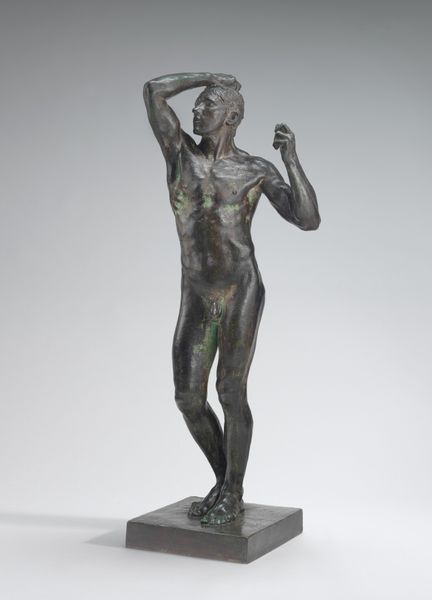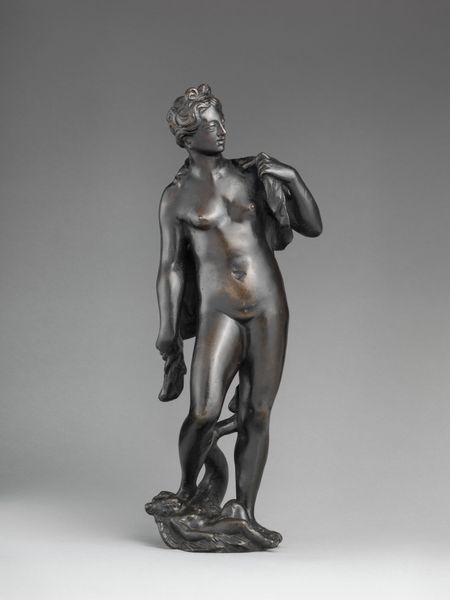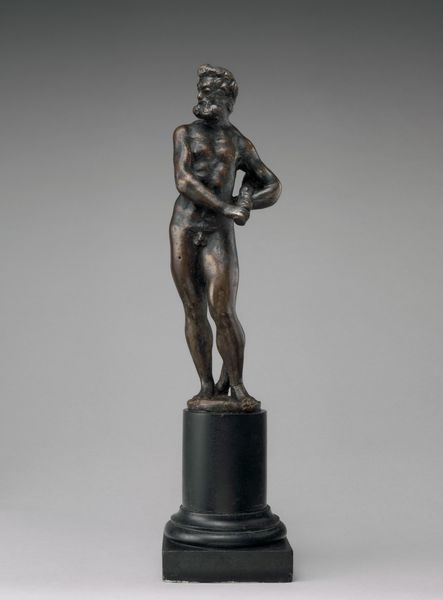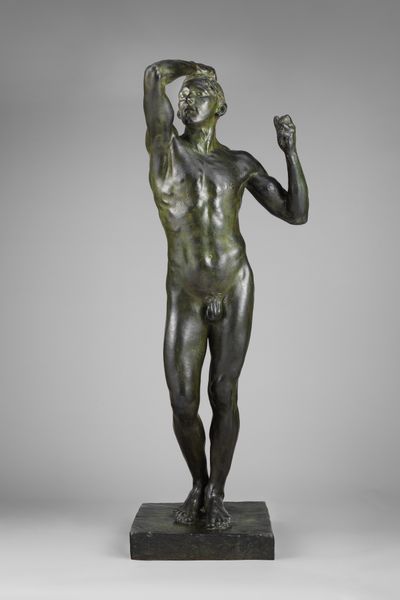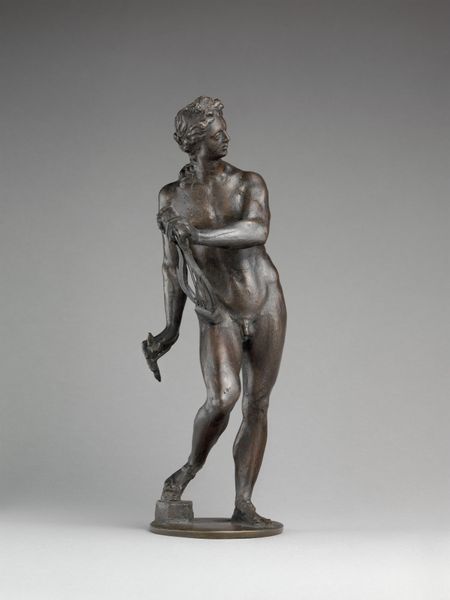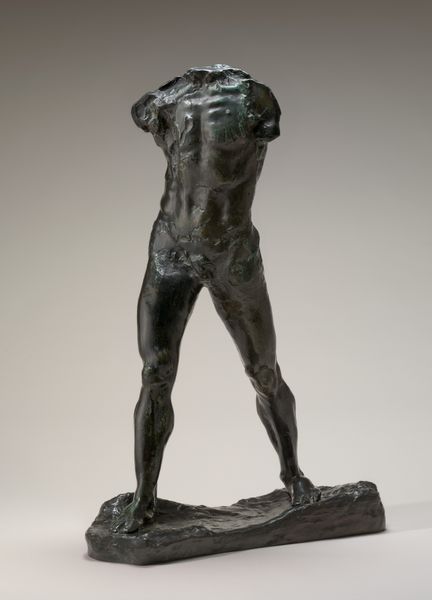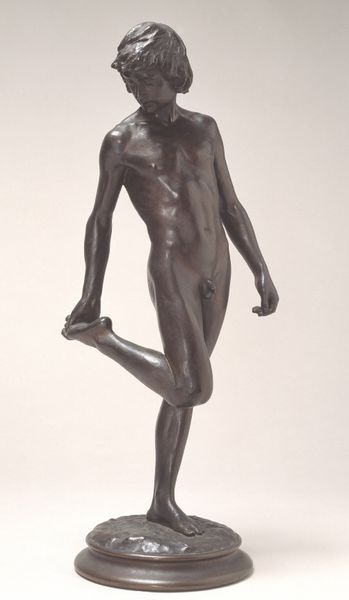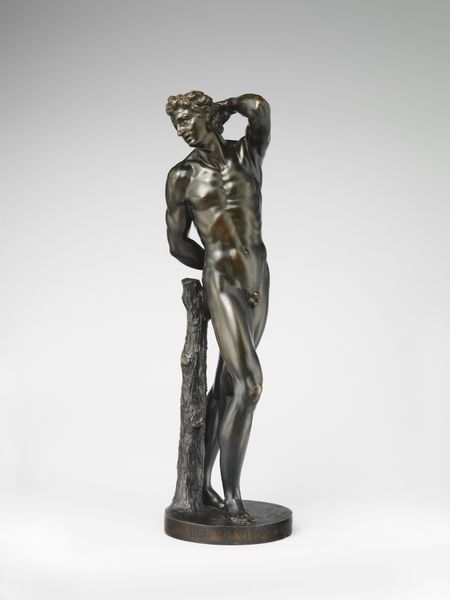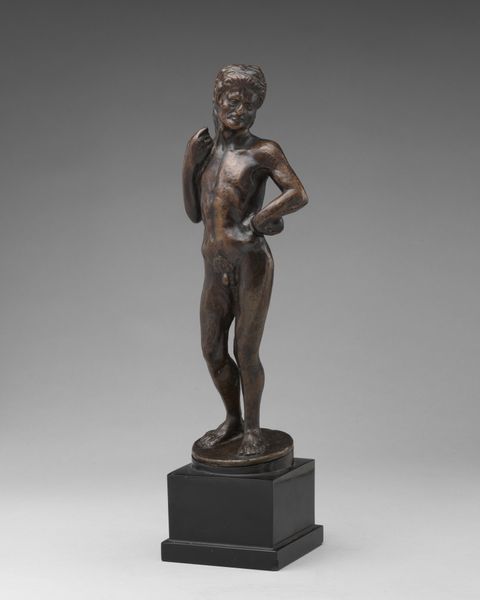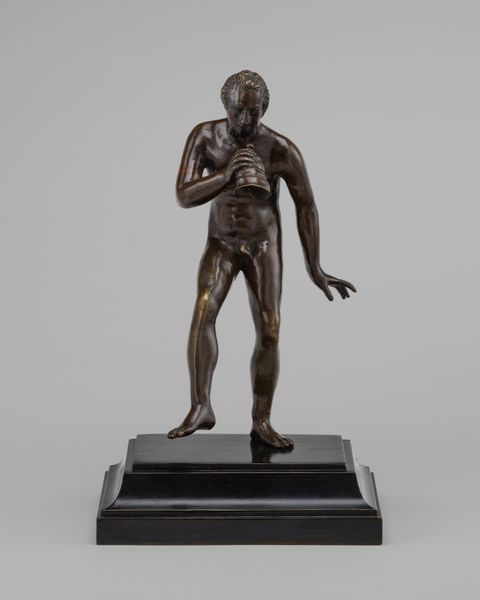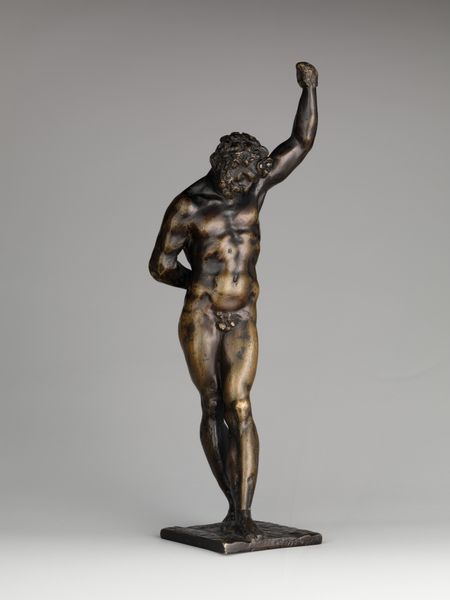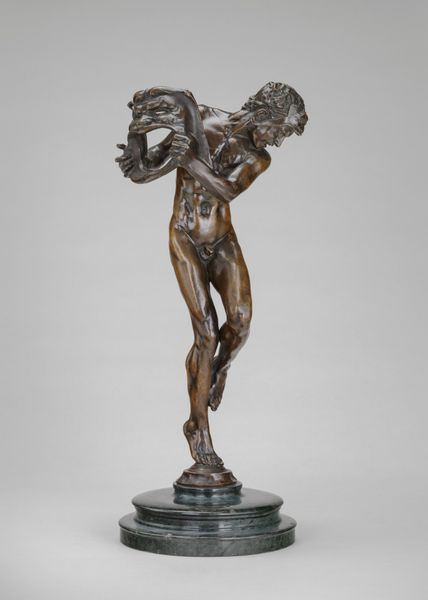
bronze, sculpture
#
sculpture
#
bronze
#
figuration
#
sculpture
#
academic-art
#
decorative-art
#
nude
#
male-nude
Dimensions: Overall: 20 1/2 × 9 1/8 × 6 1/2 in. (52.1 × 23.2 × 16.5 cm); footprint of base: 5 3/4 × 6 1/2 in. (14.6 × 16.5 cm)
Copyright: Public Domain
Frederic Leighton made this bronze sculpture, 'The Sluggard', sometime in the late 19th century. Bronze is a traditional sculptural material, prized for its strength and ability to capture fine detail. But it also speaks to the industrial age. To create this piece, Leighton would have first modeled his figure in clay or plaster. A mold was then made, and molten bronze poured in – a process reliant on skilled labor and industrial methods. Notice how the bronze emphasizes the figure’s muscularity, and how it gives the sculpture a sense of permanence. The dark, lustrous surface invites touch, yet also creates a distance. There is a clear tension here: the sculpture presents an idealized male form, evoking classical ideals. Yet its very existence depended on the realities of Victorian industry. Understanding the material and making of 'The Sluggard' allows us to consider the complex relationship between art, labor, and the changing social landscape of Leighton's time, challenging the idea of fine art as somehow separate from the world of work.
Comments
No comments
Be the first to comment and join the conversation on the ultimate creative platform.
